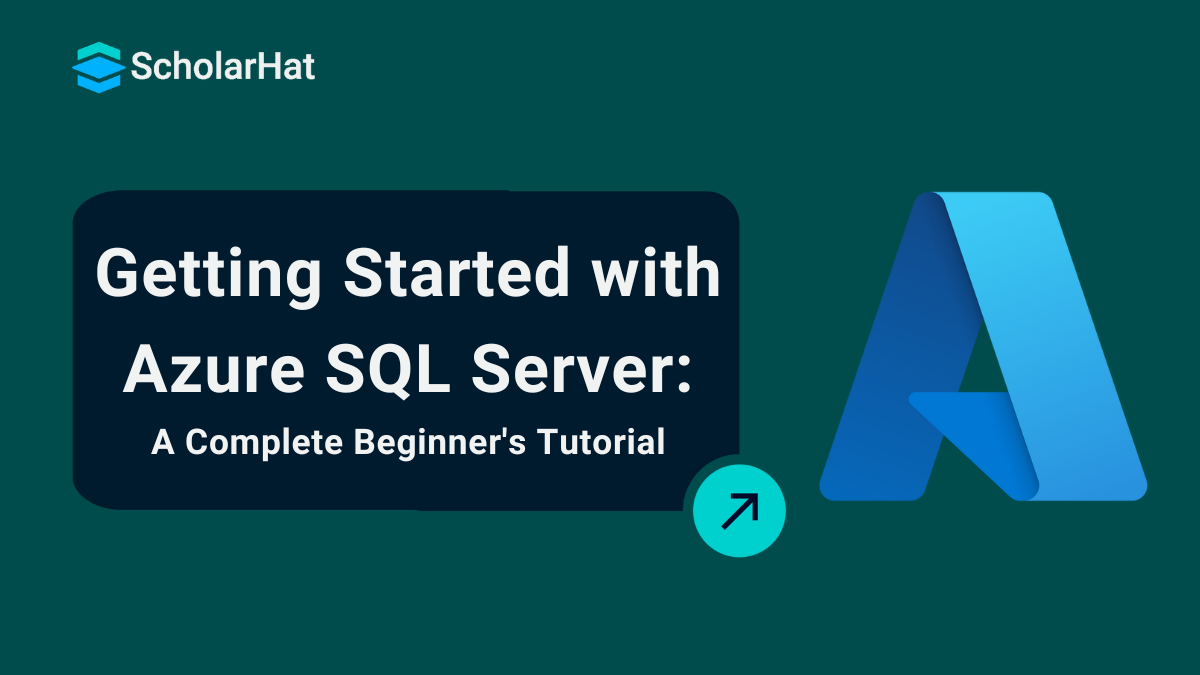26
DecAzure SQL Server - Complete Tutorial for Beginners
Azure SQL Database
Azure SQL Database is a relational database (RDBMS) service supplied by Microsoft Azure that developers commonly employ when developing new cloud-based apps. Microsoft totally manages it and is a highly scalable platform-as-a-service (PaaS) explicitly tailored for cloud applications.
In the Azure tutorial, we will learn Azure SQL Services, what is Azure SQL Database?, Azure SQL Server, Azure SQL Database Architecture, deployment options for Azure SQL Database, key features of Azure SQL Database, how to work with Azure SQL Database, key features of Azure SQL Database, and many more. Entry-level cloud jobs with Azure skills pay up to $10,000 more annually. Start with our Free Azure Fundamental Training today!
Azure SQL Services
Azure SQL Services is a wide area network for different types of managed database services provided by Microsoft Azure. These services are designed to meet a wide variety of database needs, covering complex situations like data warehousing and analytics in addition to standard relational databases.
There are some key components of Azure SQL Services, such as:
- Azure SQL Database
- Azure SQL Managed Instance
- SQL Server on Azure Virtual Machines
- Azure SQL Edge
If you're thinking about working as an Azure Developer, you should take intoAzure Developer RoadMap.
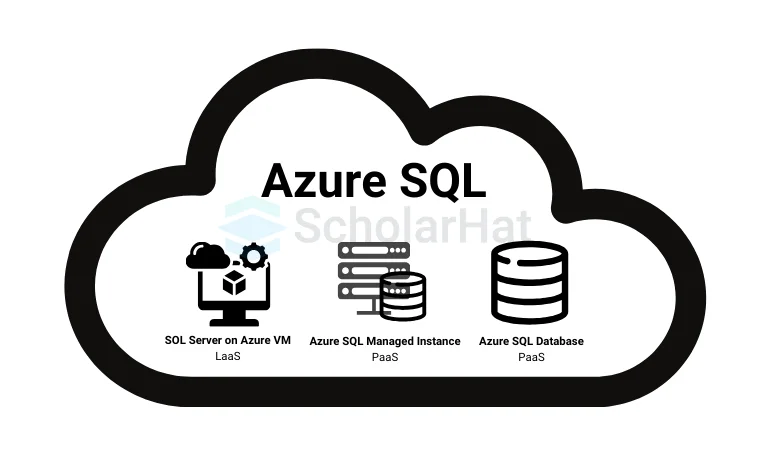
Here, we will discuss only Azure SQL Database.
What is Microsoft Azure SQL Database?
Azure SQL Database is a fully managed relational database service offered by Microsoft Azure. It depends on SQL Server technology and offers a range of features to support existing cloud applications without requiring management of the underlying infrastructure, software, or hardware.
Let's understand Azure SQL Database with the following points:
- Fully managed database service with no maintenance required.
- Scalable resources to meet varying workload demands.
- High availability with automated backups and geo-replication.
- Strong security features like encryption and firewall protection.
- Intelligent performance optimization with automatic tuning.
- Seamless integration with other Azure services and global deployment options.
The Azure SQL Databases provide deployment options in three ways that are:
- Single Database
- Elastic Pool
- Managed Instance
| Read More: |
| Understanding Azure Front Door (Features, Architecture, and Uses) |
| What is Cloud Computing? A Beginner’s Guide to Microsoft Azure |
1. Single Database
- A single, isolated database with its own dedicated resources.
- Ideal for applications that require reliable performance and have predictable workloads
2. Elastic Pool
- A collection of databases that share a set of resources within a pool.
- Best suited for scenarios where multiple databases have varying and unpredictable usage patterns, allowing resources to be allocated dynamically across databases.
3. Managed Instance
- With Managed Instance, moving workloads from on-premises to the cloud is simpler because to its nearly full feature compatibility.
- It provides virtual network (VNet) isolation, enabling secure connections between your Managed Instance and other resources in your Azure environment.
Also Read: Cloud Architect Career Guide: How to Become a Cloud Architect
Azure SQL Database v/s SQL Server
| Features | Azure SQL Database | Azure SQL Server |
| Deployment | Cloud-based, fully managed PaaS | On-premises or hosted in a virtual machine |
| Management | Microsoft handles maintenance, backups, updates, and patches | Requires manual management and maintenance |
| Scalability | Easily scalable with options like single database, elastic pools, or managed instances | Requires manual scaling by adding hardware or configuring VMs |
| Cost Model | Pay-as-you-go with pricing based on usage | Requires upfront investment in hardware and licenses or ongoing VM costs |
| High Availability | Built-in with a 99.99% SLA | Requires configuration and management for high availability (e.g., Always On) |
| Security | built-in security features like data encryption, threat detection, | Security features are available but require manual configuration and management |
| Back-up and Recovery | Automated backups with point-in-time restore options | Requires manual setup and management of backup and recovery solutions |
| Performance | Managed with options to choose DTUs/vCores and performance tiers | Performance depends on hardware and configuration, with full control over tuning |
| Use Case | Ideal for new cloud-native applications, SaaS solutions | Suitable for large enterprises needing full control, customization, |
Azure SQL Database Architecture
Azure SQL Database works under four layers, that are:
- Client Layer
- Service Layer
- Platform Layer
- Infrastructure Layer
For a better understanding, you should also read theAzure Architecture for Beginnersarticle.
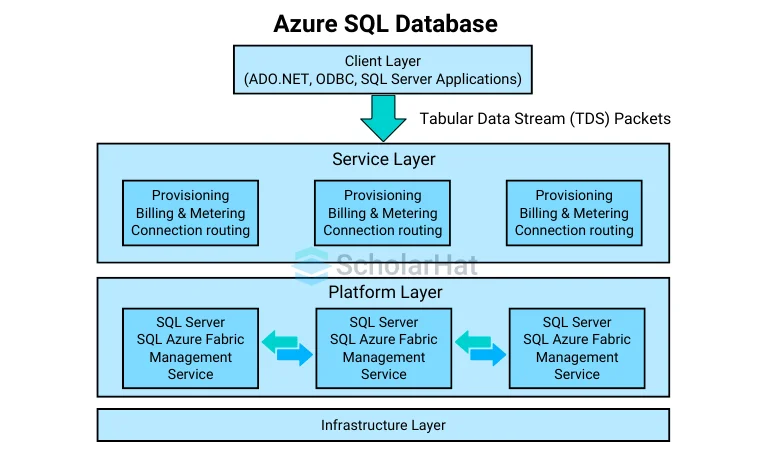
1 Client Layer
- Handles secure communication between applications and the database.
- Supports multiple connectivity options like ADO.NET, JDBC, and ODBC.
- Ensures compatibility with multiple programming languages and platforms.
2. Service Layer
- Automates database operations, including scaling and resource management.
- Ensures high availability with built-in redundancy and failover support.
- Integrates advanced security measures and automated backups.
3. Platform Layer
- Manages underlying infrastructure, including servers, storage, and networking.
- Automates load balancing, patching, and performance monitoring.
- Handles disaster recovery and data replication for high availability.
4. Infrastructure Layer
- Provides the physical hardware and data center infrastructure for Azure SQL Database.
- Ensures security, power, cooling, and network connectivity at the data center level.
- Supports global data center availability and redundancy for robust disaster recovery.
Azure SQL Database Service Tiers and Purchasing Models
Azure SQL Database Service Tiers offer multiple levels of performance and feature support to meet the demands of various applications while purchasing models provide flexible resource management and optimization.
Azure SQL Database Purchasing Models
1. DTU Model
It is referred to as the Database Transaction Unit buying model. This paradigm is based on a combined measure of processing, storage, and I/O resources across three service tiers to accommodate light to heavy database workloads.
- DTU bundles compute, memory, and I/O resources into a single measure.
- Offers predefined performance tiers like Basic, Standard, and Premium.
- Provides fixed performance levels with straightforward pricing.
- It simplifies performance management but has less flexibility than vCore.
- Limited ability to scale computing and storage independently.
2. Vcore Model
It's called the Virtual Core Model. It offers an option between a provided and a serverless computing tier.
- vCore model allows independent scaling of compute, memory, and storage resources.
- Provides flexibility to choose the number of virtual cores and storage based on workload needs.
- Offers options for General Purpose and Business Critical tiers, with the ability to adjust resources as required.
3. Serverless Model
The serverless model automatically adjusts computing in response to workload needs. It automatically pauses databases during periods of inactivity and resumes databases when activity returns.
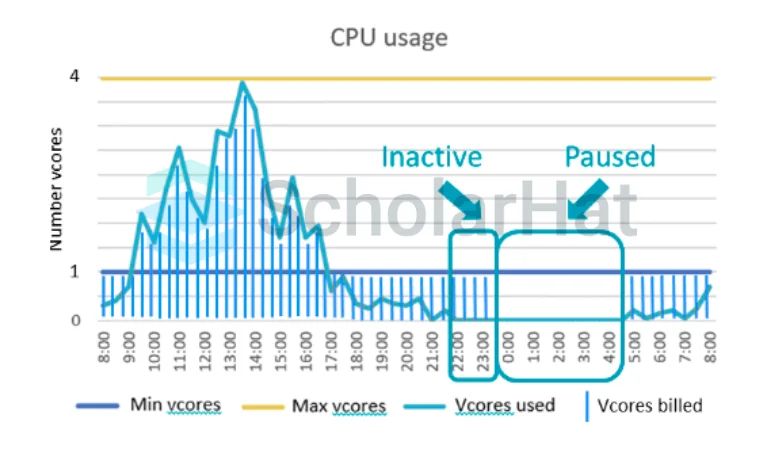
Azure SQL Database Service Tiers
1. Basic
Suitable for small applications with light workloads and minimal performance requirements.
2. Standard
Balances performance and cost for moderate traffic and workload demands.
3. Premium
Designed for high-performance and mission-critical applications with advanced features and high resource needs.
4. Hyperscale
It supports large databases and high throughput with scalable storage and computing resources.
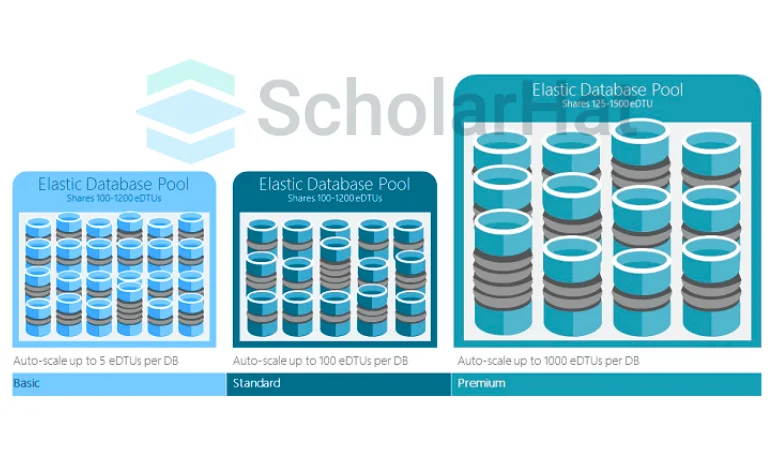
How to Work with Azure SQL Database: A Hands-On Tutorial
1. First, Log in to Azure, click on the Go to the Portal link, and navigate to the Azure Management Portal.

2. Go to the Dashboard, click on all resources, write the SQL keyword inside the search textbox, and then select the SQL database option.

3. Click on the Create SQL database link on the SQL database page.

4. Under the DATABASE DETAILS heading, enter the Database name and Server.
5. To create a new server, click on Create new under the Server textbox.

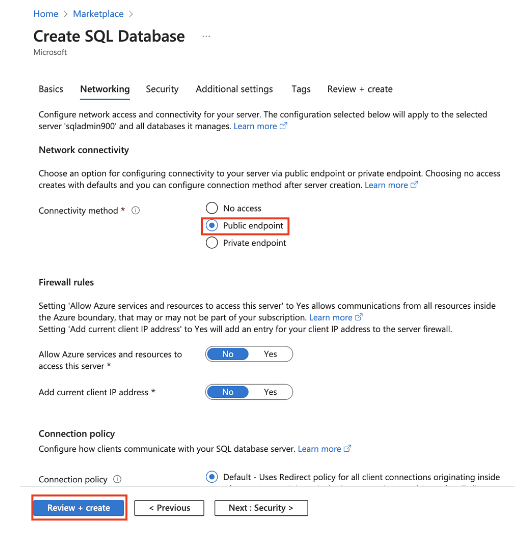
6. In Compute + storage, click Configure database and then choose Standard.
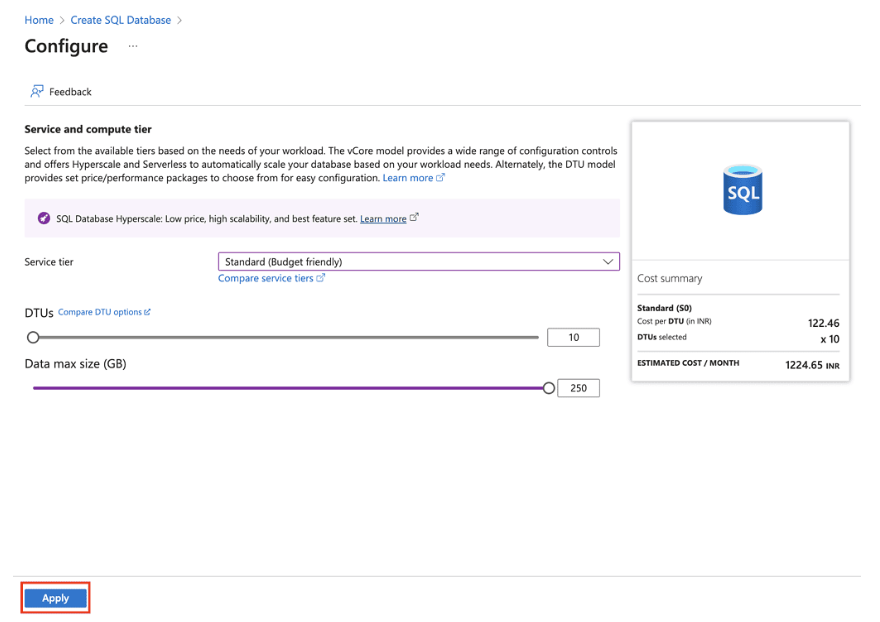
7. Click Review + create to continue.
8. Read the terms and conditions and the configuration settings. Click Create to provision the SQL database.
Microsoft Azure SQL Database Pricing
1. DTU-Based Pricing
- Basic: ₹375 per database per month (approximately)
- Standard: ₹1,125 per database per month (approximately)
- Premium: ₹9,375 per database per month (approximately)
- Premium RS: ₹13,125 per database per month (approximately)
2. vCore-Based Pricing
- General Purpose:₹1,500 - ₹6,000 per vCore per month (approximately)
- Hyperscale: ₹3,000 - ₹12,000 per vCore per month (approximately)
Advantages of Using Azure SQL Database
- Reduces administrative overhead with automatic maintenance, backups, and updates.
- Easily scales resources up or down based on application needs.
- Built-in features provide robust, high availability and disaster recovery.
- Advanced security features like encryption and threat detection protect your data.
- Pay-as-you-go pricing and serverless options help optimize costs.
Azure SQL Database Best Practices
Azure SQL Database provides some best practices, such as:
1. Optimize Performance
- Use performance tools to analyze and optimize query performance.
- Implement automatic and manual indexing strategies to improve query efficiency.
2. Implement Security Measures
- Enable encryption for data at rest and in transit.
- Use role-based access controls and network security groups to restrict access.
3. Regular Backups
- Ensure automatic backups are enabled.
- Regularly test restore processes to safeguard against data loss.
5. Scale Appropriately
- Choose the right service tier based on application requirements.
- Scale resources up or down according to workload demands.
6. Monitor Resource Usage
- Configure alerts for resource utilization and potential issues.
- Regularly review metrics to identify and address performance bottlenecks.
Advanced Features and Use Cases
Azure SQL Database provides advanced features and use cases that are:
Azure SQL Database Advanced Features
1. Advanced Security
Includes data encryption at rest and in transit, threat detection, and vulnerability assessment to ensure comprehensive protection.
2. Automated Backup and Restore
Provides automated backups with point-in-time restore capabilities for disaster recovery and data protection.
3. High Availability and Disaster Recovery:
Built-in high availability with automatic failover and geo-replication for disaster recovery.
4. Scalability
Offers flexible scaling options with service tiers and the ability to scale compute and storage resources independently.
5. Serverless Compute
Automatically scales compute resources based on workload demand, with cost savings during periods of inactivity.
6. Hyperscale
Supports large databases with fast scaling of storage and compute resources, and near-instantaneous backup and rest
Azure SQL Database Use Cases
1. E-Commerce
Handles high transaction volumes and ensures availability during peak shopping seasons with scalable resources and high-availability features.
2. Financial Services
Provides robust security and compliance features for managing sensitive financial data and transactions.
3. Healthcare
Manages large volumes of patient data with solid security and compliance with regulatory requirements.
4. SaaS Applications
Supports multi-tenant applications with elastic pools to manage resources across multiple databases efficiently.
5. Business Intelligence
Integrates with BI tools for advanced analytics, reporting, and data visualization to support decision-making processes.
Conclusion
In conclusion, the Azure SQL Database is a complete solution for various industries, from dynamic e-commerce platforms to sensitive financial and healthcare systems. Its broad features, such as scalability, security, and interaction with powerful analytics tools, identify it as a top solution for a wide range of data management needs.Cloud developers with Azure skills earn 30% more on average. Don’t miss out—join our Azure Developer Associate course today!
FAQs
- DTU-Based: Fixed tiers with bundled resources (Basic, Standard, Premium).
- vCore-Based: Flexible scaling of computing and storage with General Purpose and Business Critical tiers.
- Serverless: Pay-as-you-go for computing with automatic scaling.
- Hyperscale: Scales storage and computing independently for large databases.
Take our Azure skill challenge to evaluate yourself!

In less than 5 minutes, with our skill challenge, you can identify your knowledge gaps and strengths in a given skill.

